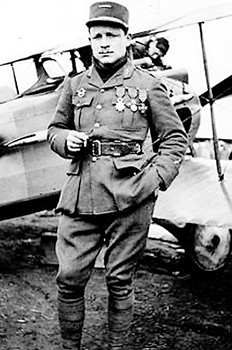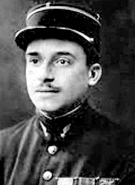Letters to the Editor
View(s):Delay in Sampur coal power plant: Blessing in disguise
The news item titled “India, Lanka in heated row over coal power plant” which appeared in the Sunday Times of December 9 ended in saying “They (Power sector officials) said that open tenders should be called for the setting up of a 500 MW CEB owned power plant in Trincomalee”.
This is a praiseworthy suggestion. I wish to add to this to say that in calling tenders, the fuel option should be kept open, be it either coal or natural gas (NG), and also that the tender should cover infrastructure facilities for a 1000 MW capacity plant with the 500 MW plant to be the first phase. According to CEB’s Generation Expansion Plan (GEP), it is envisaged to build altogether 1000 MW capacity coal power plants at Trincomalee.
The tender specifications should include not only the performance indicators of the plant but also environmental factors including emission levels of carbon dioxide, oxides of nitrogen, sulphur dioxide and suspended particulate matter (SPM) per unit generation of electricity, as well as amounts of solid waste and liquid effluents released by the plant, all of which should be kept to a minimum.
The CEB’s latest GEP has considered for the first time the NG option and has suggested that it be added beyond 2017. However, today it is not necessary to wait that long because most of the LNG purchases are currently carried out on the spot market rather than on long term contracts where the purchaser has to wait several years before delivery begins. Further, building a combined cycle gas turbine (CCGT) plant to operate with NG takes much shorter time compared to that taken for a coal plant. Therefore, if the CEB acts on a fast track, it should be possible to have a NG plant in operation at least by 2015.
With a deep harbour being available at Trincomalee, importing of LNG will not pose a problem unlike in the west coast. The CEB could initially ask for a floating regasification facility which could be easily berthed in the harbour and switch on to an on-shore terminal subsequently. The capacity of the terminal should be decided enabling it to meet future energy needs in the country in other sectors as well. It should be kept in mind that the government has decided to have the future metropolis within the Anuradhapura-Trincomalee-Dambulla triangle, according to the National Physical Planning Department plan released in 2010.
If tenders for plants with both fuel options are obtained with proper specifications, officials could then compare which is the better option not only in terms of costs and time factor but also in terms of efficiency, absence of pollution – air, water and land, and impacts on the health of the people. Plant to plant, CCGT plant costs less than a coal plant, both in capital and maintenance.
Only the cost of the fuel needs to be assessed. This can be confirmed with certainty only by calling open tenders from reputed dealers. It should be remembered that the government has never called for firm quotations for building a NG power plant and for supplying LNG fuel. It has been rejected by policy makers previously purely on speculation that NG plants are expensive.
In the event the NG option is found to cost more, the extra cost could be defrayed from funds available from Climate Change Convention funds available for mitigating carbon dioxide emissions, as a NG fired power plant emits about 50% less CO2 compared to that from a coal plant, provided adequate measures are taken to prevent leakage of NG from the system. Even otherwise, considering that NG plants do not emit any SPM or SO2 which are the main causes for respiratory problems among the people, money saved from health care on patients suffering from respiratory ailments which amounts to several billions of Rupees annually will justify spending additional money on a NG plant. Several studies have been done elsewhere to estimate the cost of these externalities expressed as a unit cost. If these externalities are added to the cost of production, a NG plant would become competitive against a coal plant.
Under the circumstances, there is absolutely no justification for the government to decide to build a coal power plant at Sampur without considering seriously the NG option. Even if the coal plant is given free of charge to Sri Lanka by India, we should think twice before accepting it considering the heavy pollution it would leave behind including huge amounts of hazardous ash. It is a blessing in disguise that the project implementation got delayed which would enable Sri Lanka to take a second look at the entire project.
Dr. Janaka Ratnasiri, Nawala
New rules for police: Instead of ‘sir’, I was called a buffalo
Recent instructions issued by the National Police Commission require police officers to address a visitor to the station as “Sir” or “Madam”.
Last week I travelled in a vehicle along Mirihana Road toward Gangodawila. A friend of mine got in near “Kattiya” Junction. He did so in a swift manner to avoid any traffic block behind my vehicle. But police officer at the junction scolded us saying, “mee harak weda karanda epa ooy” a loose interpretation of which is “don’t behave like a buffalo”.
He took my driving licence and requested me to take my vehicle to a side. After a few minutes, he gave the licence back to me and let me go.
My embarrassment over this incident is the manner in which the Police Officer spoke to a senior citizen like me, comparing me with a buffalo.
Ranjith Godawatta, Pita-Kotte
Kirinde-Yala Road needs urgent repair
Being a frequent visitor to the Yala wildlife sanctuary it is sad to see the extremely poor condition of the Kirinde-Yala road which appears to get worse from visit to visit.
Not so long ago this was a well-maintained tarred road and it would take just 15-20 minutes to reach the park office from the Kirinde turn-off.
It has now become a dirt track with a few patches of tar in places. With a large number of local and foreign tourists visiting the park, bringing in an income of Rs. 100,000-300,000 a day, Yala has made the Wildlife Department one of the highest income generating institutions in the country.
Those visiting the park will have serious doubts about the much-talked-about development taking place in post-war Sri Lanka, given the atrocious condition of the road.
We need an answer from the Road Development Authority, the Tourist Board, the Wildlife Department and the Provincial Council regarding the maintenance of this road.
G.S.P. Mt. Lavinia
Prison chiefs in shackles
I refer to a letter by Edward Gunawardena, a retired senior police officer who is still interested in crime and connected matters important to law-abiding and peace-loving citizens.
Mr. Gunawardena speaks of the days when the Prisons Department was headed by commissioners who were highly professional, competent and devoted. Their services were even recognised internationally.
We agree that prisoners should be treated well to enable them to return to society as reformed persons. But it is also essential that prison officers be ‘treated’ in a better way to enable them to perform duties more efficiently.
May I mention how two former heads of the Department were treated? One commissioner who declined to send the official vehicle for the use of the minister was denied an extension of service after he reached 55. The other commissioner refused to place his signature to a list of officers selected for promotion — as the officer whose name appeared first on the list did not present himself for any interview.
Being aware of what happened to the former commissioner, he retired without applying for an extension. His service for another few years was lost as a result. Yes, a Presidential commission of inquiry may be the urgent need of the hour?
Jeoffrey Gunasekera, Retd. Superintendent of Prisons. Colombo 5
Tragic endings in the air
Post Script to Ceylon’s first flights
Further to the article ‘Ceylon’s first flights’ by Roger Thiedeman in the Sunday Times PLUS on December 2, I wish to add the following information about Lanka’s aviation pioneers.
 Ace of aces: Raoul Lufbery |
As reported in Roger’s article, Franz Oster, the German whose three attempts to fly here in December 1911 and January 1912 ended in crash-landings, died of natural causes in Tsingtao, China in 1933; but the two Frenchmen – Georges Verminck and Marc Pourpe – had tragic endings to their lives.
Verminck was killed on April 8, 1913 while demonstrating an aerial manoeuvre with his Blériot monoplane in My Tho, Cochin China (as that part of Vietnam was then known). Having arrived in My Tho from Saigon, he completed his first flight before a large audience, then went up for a second time. But encountering clear air turbulence, the airplane plunged to the ground, out of control, with Verminck – who had not strapped himself in – clinging to the fuselage. Rendered unconscious by impact with the ground, he died a few minutes later. A monument to the French flyer is said to have been erected in Saigon by well-wishers, although other accounts state that the monument is at the crash site in My Tho.
Devastated by the loss of his friend, Marc Pourpe returned to France. He joined the French Air Force, with which he flew during the Great War (World War I). But on December 2, 1914 he was killed while attempting a night landing near Villers-Bretonneux.
While in Ceylon in 1912, Verminck and Pourpe were accompanied by their manager, Maurice Gleiser. But when Marc Pourpe hired a French-born American as his mechanic, a tenuous but significant link was forged between Ceylon’s first flights and a revered World War I flying hero. Gervais Raoul Lufbery emigrated from his native France to the USA at the age of six. When he was 19 he set off to travel the world in search of adventure, and in 1912 he met Marc Pourpe. Records differ as to whether this occurred before Pourpe and Verminck went to Ceylon that year, or after they arrived in India or even, later still, in French Indochina (of which Vietnam is now a part). So we don’t know, for certain, whether Raoul Lufbery was part of the Pourpe/Verminck entourage in Ceylon.

Marc Pourpe in French Air Force uniform
What we do know is that Lufbery toured India and the Far East working as a mechanic on Marc Pourpe’s Blériot monoplane. When World War I began, Lufbery enlisted in the French Foreign Legion. He was reunited with Pourpe after the latter had joined the French Air Force. Then, after Pourpe’s fatal crash, Lufbery joined the fabled Lafayette Escadrille, the air force squadron comprising American volunteer pilots in the French Air Force.
Raoul Lufbery soon became the Escadrille’s leading fighter pilot, shooting down 16 German aircraft, according to an official tally. Revered by his men, who called him “ace of aces”, Lufbery was also famous for devising fighter ’plane tactics such as the ‘Lufbery Circle’ manoeuvre, whereby pilots formed a circle with each of their aeroplanes protecting the one in front.
On May 19, 1918, after joining the US Army Air Service as a combat instructor, Lufbery was killed when his Nieuport biplane was hit by gunfire from a German Rumpler he was attempting to intercept. In one account of the incident, Lufbery is said to have deliberately leapt to his death from the blazing Nieuport rather than burn alive, while another states that he simply fell out of the cockpit when the aircraft, which wasn’t burning, flipped onto its back in mid-air.
Captain Nimal Rambukwelle, Kandy
Follow @timesonlinelk
comments powered by Disqus


















